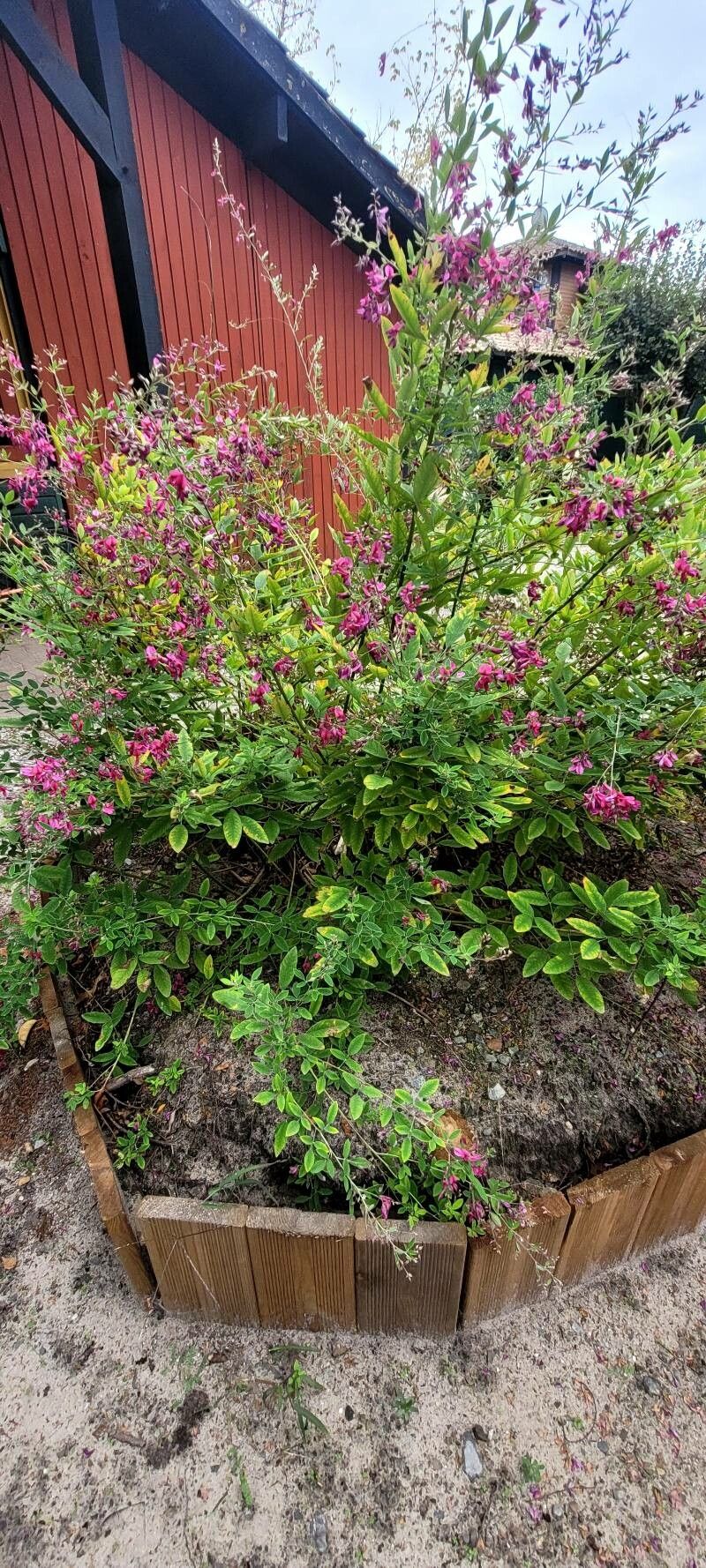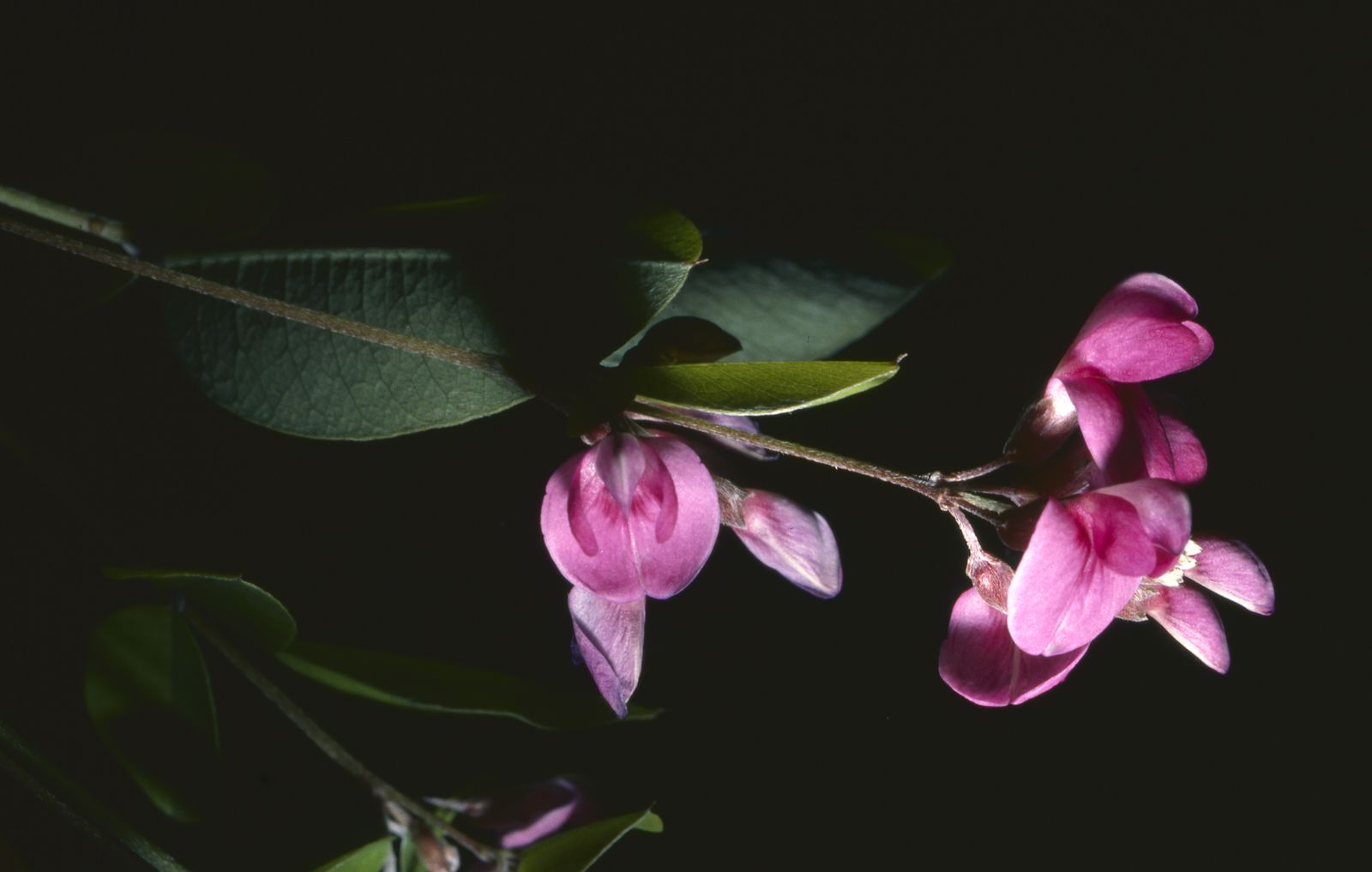Bicolor Lespedeza
lespedeza bicolor
Also known as: ["Bicolor Bush Clover","Shrub Leespedia"]
Overview
A deciduous shrub native to East Asia, valued for its attractive pinkish-purple flowers and hardy nature.
Benefits & Perks
["long-flowering","wildlife attractant (bees, butterflies, birds)","drought tolerant"]
Botanical Classification
| Phylum: | Magnoliophyta |
| Class: | Magnoliopsida |
| Order: | Fabales |
| Family: | Fabaceae |
| Genus: | Lespedeza |
| Botanical Name: | Lespedeza bicolor |
Plant Characteristics
Basic Information
- Category: Shrubs
- Suitable Location: outdoor garden bed in a sunny area, adaptable to hedgerows or as a specimen plant
- Suitable For:
- Is Weed: No
- Allergenicity: low
Environmental Needs
- Climate: {"temperatureRange":"–25–40°C"}
- Hardiness: {"zones":"3–8"}
- Misting: rarely required, only if grown in very dry indoor conditions
- Drainage: Fast-draining to prevent root rot.
- Soil Type: Well-draining loam with organic matter; tolerates poor soils.
Maintenance Level
- Maintenance Level: moderate
- Toughness Level: moderate
- Pruning Frequency: Annually in late winter or early spring before new growth begins.
- Pruning Intensity: Moderate; remove up to one-third of old growth to rejuvenate.
Care Details
Ideal Sunlight Coverage:
Full sun (6–8 hours/day); tolerates partial shade but may flower less.
Sunlight Tolerance Tips:
Acclimate new plants gradually to full sun; protect from intense midday sun in hot climates; ensure adequate airflow to prevent fungal issues.
Care Requirements
Care Difficulty
moderatemoderate
Sunlight
full sun to partial shade
Full sun promotes flowering; partial shade reduces stress in hot regions; rotate plants for even growth.
Watering
every 7–10 days during active growth, less frequently in winter
Water thoroughly but infrequently; ensure good drainage; avoid wetting foliage.
Soil
well-drained, loamy soil with moderate organic content
pH: Slightly acidic to neutral (pH 6.0–7.0).
Ensure good drainage; amend with organic matter; avoid waterlogged conditions.
Temperature
Hardy in USDA zones 4–8; prefers 60–75°F (15–24°C); tolerates winter cold but needs protection from extreme heat.
Protect from frost; avoid sudden temperature swings; ensure good air circulation in heat.
Fertilizing
every 4–6 weeks during spring and summer with balanced, slow-release fertilizer
Fertilize once a year in spring; use a low-nitrogen formula; water well after application.
Propagation
Methods
Softwood cuttings in late spring or early summer.
Step-by-Step Propagation Guide
- Take 4–6 inch cuttings.
- Remove lower leaves.
- Dip in hormone.
- Plant in medium.
- Maintain humidity.
Best Time: Late spring to early summer when new growth is flexible.
Environment
Warm (70–75°F), humid environment with indirect light.
Medium
Peat-based mix with perlite or sand for good drainage.
Hormone
Rooting hormone recommended for faster root development.
Timeline
Roots in 4–6 weeks; establish in new pot or ground within 1–2 months.
Tools Needed
Pruners, rooting hormone, small pots, misting spray bottle.
Quick Tips
Use morning-cuttings for best results; keep soil consistently moist but not waterlogged.
Pruning & Repotting
Pruning Guide
Method
Selective thinning of branches; heading back to encourage denser growth.
Pruning Plan
Prune to maintain shape, encourage bushiness, and remove dead or weak growth.
Tools
Pruning shears, loppers (for larger branches), sterilizing solution.
Checklist
Sterilize tools; prune dead/damaged wood; shape plant; clean up debris.
Repotting Guide
Best Season
Early spring before active growth starts.
Pot Size
Increase pot size by 2–3 inches in diameter.
Method
Remove plant gently; trim roots if needed; repot in fresh, well-draining soil; water thoroughly.
Suggestions
Repot every 2–3 years or when roots fill the container; beneficial for container-grown plants.
Checklist
Choose new pot; prepare fresh soil; inspect roots; water after repotting.
Advanced Care Tips
Watering Mastery
Watering Checklist
Check soil moisture; water deeply; ensure drainage; avoid wetting leaves.
How to Apply Water Properly
Water at the base of the plant, ensuring moisture reaches the root zone; allow excess water to drain away; water early in the morning to minimize evaporation.
Watering Schedule Tips
Water deeply once the top inch of soil is dry; reduce frequency in winter to prevent root rot.
Soil Improvement
Add compost or aged manure for fertility; mix sand or perlite for drainage.
Temperature Stress Management
Signs of Temperature Issues
Chlorosis or leaf scorch in excessive heat; stunted growth or dieback in prolonged cold.
Cold Stress
Leaves may wilt or turn brown; growth slows; roots can freeze in poorly insulated soil.
Solution: Mulch heavily around the base; protect from harsh winds; move potted plants to sheltered locations.
Hot Stress
Wilting, leaf drop, or flower bud abortion; soil dries out quickly.
Solution: Provide afternoon shade; increase watering frequency; use mulch to retain soil moisture.
Fertilizing Guide
Fertilizing Checklist
Choose balanced fertilizer; apply in spring; water after fertilizing; avoid contact with roots.
Fertilizing Method
Use balanced, slow-release fertilizer in early spring; avoid over-fertilizing, which can reduce flowering.
Common Problems & Solutions
Toxicity Warning
Cats
Non-toxicLespedeza bicolor is not considered toxic to cats. It does not produce any known harmful effects when ingested or touched.
⚡ Toxic If:
Generally non-toxic
Dogs
Non-toxicLespedeza bicolor is not considered toxic to dogs. There are no known adverse effects associated with ingestion or contact.
⚡ Toxic If:
Generally non-toxic
Humans
Non-toxicLespedeza bicolor is not considered toxic to humans under normal circumstances. It is commonly used in landscaping and does not pose significant health risks.
⚡ Toxic If:
Generally non-toxic
Frequently Asked Questions
Q: Does Lespedeza bicolor attract wildlife?
A: Yes, it is known to attract bees, butterflies, and birds.
Q: Is Lespedeza bicolor toxic to pets?
A: Reliable information on toxicity to pets is not available.
Q: How often should Lespedeza bicolor be watered?
A: It is drought tolerant but benefits from regular watering, especially during dry periods.
Quick Reference
| Family: | Fabaceae |
| Care: | moderate |
| Light: | full sun to partial shade |
| Water: | every 7–10 days during activ |
Get Expert Care Tips
Download the Plantious app for personalized care reminders and plant identification!
Google Play App Store








